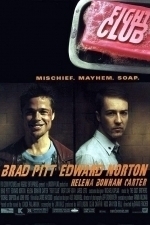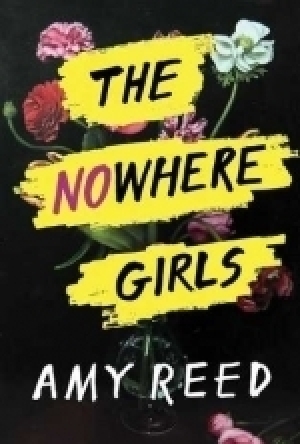
Adobe Lightroom CC
Photo & Video and Productivity
App
Make amazing photos, from anywhere. Adobe Lightroom CC for mobile is a free app that gives you a...

Fiverr - Freelance Services
Business and Lifestyle
App
Business owner working around the clock? Rushing to complete a project? Entrepreneur on-the-go? Say...

Fleet Command - Win legion war
Games and Social Networking
App
Fleet Command is a naval warfare strategy game based on real life ships and military ranks,...

Veggie Weekend – Healthy Vegan Vegetarian Recipes
Food & Drink and Health & Fitness
App
Enjoy a delicious and healthy Veggie Weekend with Filibaba. Veggie Weekend is free to download, with...

Joule: Sous Vide by ChefSteps
Food & Drink
App
Get access to the best sous vide recipes and control Joule, the world’s smallest, most powerful...

My New Roots
Food & Drink and Health & Fitness
App
Cook healthy and delicious food with these 120+ healthy recipes from Sarah Britton’s award-winning...

Aviation Modeller International Magazine
Lifestyle and Magazines & Newspapers
App
Aviation Modeller International Magazine – The aeromodelling magazine for the true enthusiast ...

Tank Battle: East Front 1944
Games and Entertainment
App
Tank Battle: East Front 1944 is the penultimate title in the successful ‘Tank Battle: East...
DaveySmithy (107 KP) rated Fight Club (1999) in Movies
Dec 3, 2024
The story is told through the eyes of the unnamed narrator (Norton), a white-collar worker trapped in a monotonous life. Crippled by insomnia and a desperate longing for purpose, his mundane existence takes a dramatic turn when he crosses paths with Tyler Durden (Pitt), a magnetic, anarchic soap maker. Together, they form the titular fight club—a raw, underground outlet for men to vent their frustrations by literally beating them out of each other. What begins as an unconventional form of therapy soon spirals into a chaotic and dangerous movement, leading the narrator down a path of self-destruction and shocking revelations.
Edward Norton delivers a career-best performance as the narrator, capturing the character’s descent into madness with unnerving precision. His dry wit and self-deprecating humor make him relatable, even as his actions become increasingly unhinged. But it’s Brad Pitt who truly steals the show as Tyler Durden. Charismatic, unpredictable, and dripping with swagger, Pitt embodies the fantasy of rebellion and freedom that so many viewers secretly crave. Together, the two actors create a mesmerizing dynamic, with Tyler representing everything the narrator wants to be—and fears he might become.
Helena Bonham Carter rounds out the core cast as Marla Singer, a nihilistic wildcard who both disrupts and grounds the narrator’s chaotic journey. Her chemistry with Norton is as compelling as it is unconventional, adding a layer of emotional complexity to an otherwise hyper-masculine narrative.
What sets Fight Club apart is its fearless critique of modern society. It skewers consumerism, masculinity, and the emptiness of the so-called “American Dream,” forcing viewers to confront uncomfortable truths about their own lives. Fincher’s direction is sharp and unrelenting, with the film’s gritty visual style perfectly complementing its nihilistic tone. The innovative use of CGI, fourth-wall-breaking moments, and hauntingly effective cinematography by Jeff Cronenweth keep the audience on edge, unsure of what to expect next.
Yet, Fight Club is not without flaws. Its provocative themes can feel overly blunt at times, and some viewers might find its violent and anarchistic undertones alienating. Additionally, while the infamous plot twist is masterfully executed, it risks overshadowing the film’s deeper messages upon rewatch.
The soundtrack, anchored by The Dust Brothers’ industrial score and the unforgettable use of The Pixies’ “Where Is My Mind?” in the climax, elevates the film to iconic status. These elements, combined with razor-sharp dialogue and endlessly quotable lines, solidify Fight Club as a masterpiece of late-90s cinema.
While it may not be for everyone, Fight Club is a bold, daring, and unforgettable experience that challenges societal norms and forces introspection. It’s an audacious 9/10 film—flawed but brilliant, much like the chaos it portrays.
mostlyinpyjamas (13 KP) rated The Nowhere Girls in Books
Nov 25, 2017
Who are the Nowhere Girls? They’re every girl. But they start with just three:
Grace, the preacher’s daughter who unwittingly moved into the old house of a victim whose pain adorns the walls.
Bold Rosina, whose heart has become hardened by all of the straight girls who broke it.
And misunderstood Erin, the girl who finds more solace in science and order than she does in people.
They are brought together by the idea of changing the narrative of a girl they had never met, Lucy Moynihan, the victim of a sexual assault who was victimised further by people who found it easier to believe she had cried wolf than to confront what had really happened to her. A girl who, through the course of one evening, went from an excited teenager who felt wanted by a boy for the first time, to someone else entirely, with ‘a voice in the darkness, giving her a new name: Slut’.
Together, they form the Nowhere Girls, and decide to avenge the
rape of a girl none of them knew.
~
I’m going to jump straight in with wow! This book packs a powerful punch.
The Nowhere Girls tackles rape culture, sexual assault, misogyny and victim blaming, and does it well.
At times it’s uncomfortable reading, but it’s realistic, the empowering feminist message is never patronising, and it does not take an All men are bad stance.
I love the diversity of the 3 main characters. Rosina is Mexican, and gay, Grace’s mum is a church pastor, run out her former church because of her outspoken, liberal views, and Erin has Aspergers, which I felt – as someone with two children with Autism- was well observed! Erin was my favourite character.
The Nowhere Girls shows what can happen when girls get together and support each other, even when they have different views on things. It shows, and gives hope, that by speaking up, by standing together, by raising one another up, we can begin to bring about change.
Amy Reed writes, at the end of the book, how the story was partly inspired by events in her town, owners of a coffee shop were called out by the people in the town, on their misogynistic behaviour, which included a graphic list of sexual conquests – including local women, posted online. They eventually left town in disgrace.
The excerpts from the (fictional) blog in the book, The real men of Prescott were difficult to read, mostly because there really are people who think this way.
This is taken from the blog….
Girls want to be taken; it’s in their natures, so sometimes they put up a fight hoping you’ll get a little rough. The truth is, sometimes no doesn’t mean no. Of course, the feminazis will never admit this, but I’ll bet you a hundred bucks most of those chicks like it rough.
We really do need to talk about rape culture, every girl needs to know that they can say no, at any point, that even if they are too drunk to consent it’s not their fault, it’s still rape, that even if they didn’t have the strength to fight it’s not their fault, it’s still rape, boys need to know this too.
There needs to be a change within society, rape culture is real, it’s happening, and it needs to stop. Any book that can start a conversation about this is a good thing, in my opinion, and with its raw honesty The Nowhere Girls is an emotional, hard hitting, important book.
Buzzfeed says the Nowhere Girls is
‘Empowering, brutally honest, and realistically complex’

